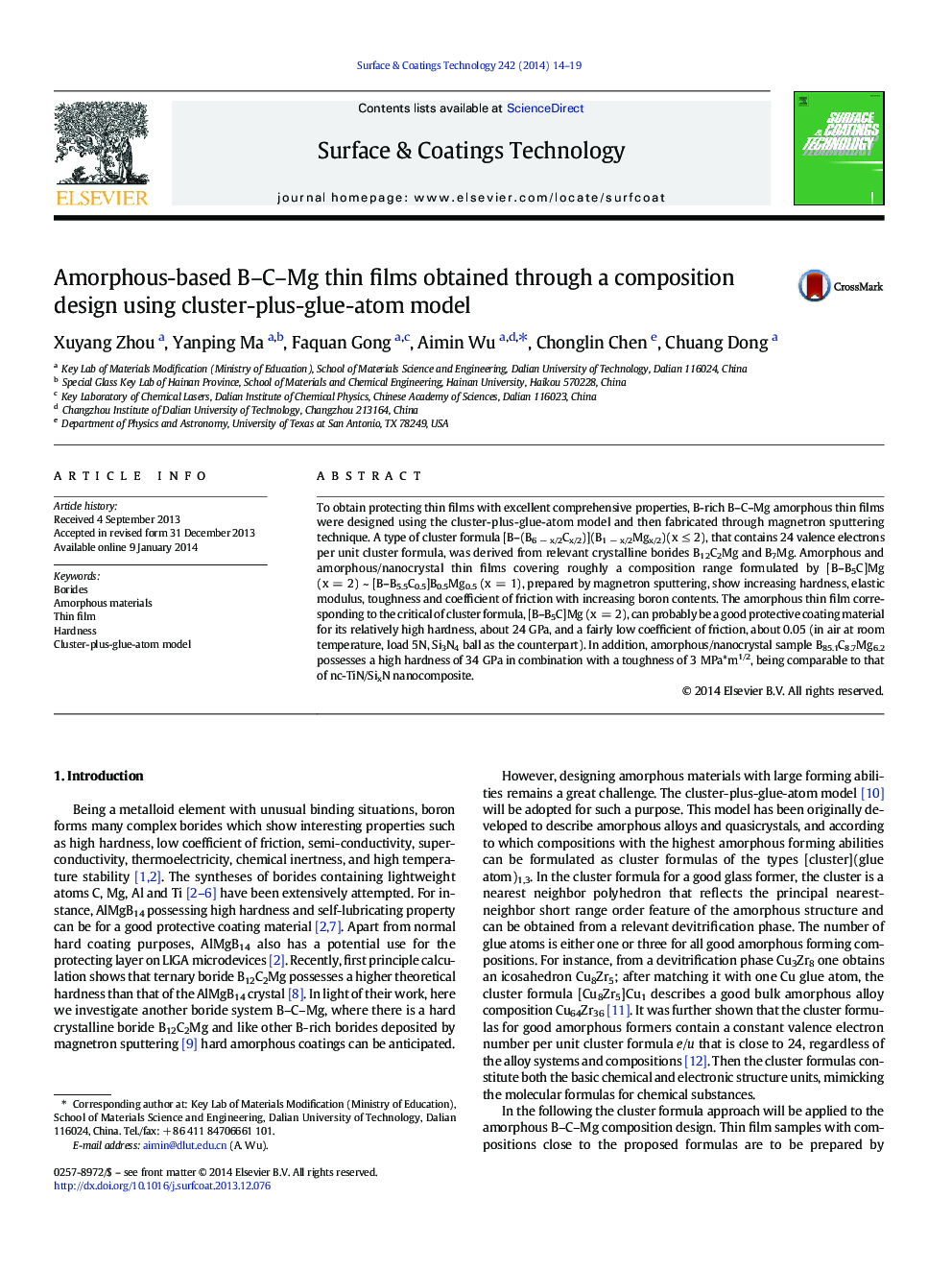| Article ID | Journal | Published Year | Pages | File Type |
|---|---|---|---|---|
| 1657586 | Surface and Coatings Technology | 2014 | 6 Pages |
•Amorphous B–C–Mg compositions were designed using the cluster-plus-glue-atom model.•B-rich B–C–Mg thin films were fabricated by magnetron sputtering.•Amorphous-based B–C–Mg has good tribological properties for protective purposes.•Amorphous/nano-crystal B–C–Mg thin films are hard (34 GPa) and tough (3 MPa*m1/2).
To obtain protecting thin films with excellent comprehensive properties, B-rich B–C–Mg amorphous thin films were designed using the cluster-plus-glue-atom model and then fabricated through magnetron sputtering technique. A type of cluster formula [B–(B6 − x/2Cx/2)](B1 − x/2Mgx/2)(x ≤ 2), that contains 24 valence electrons per unit cluster formula, was derived from relevant crystalline borides B12C2Mg and B7Mg. Amorphous and amorphous/nanocrystal thin films covering roughly a composition range formulated by [B–B5C]Mg (x = 2) ~ [B–B5.5C0.5]B0.5Mg0.5 (x = 1), prepared by magnetron sputtering, show increasing hardness, elastic modulus, toughness and coefficient of friction with increasing boron contents. The amorphous thin film corresponding to the critical of cluster formula, [B–B5C]Mg (x = 2), can probably be a good protective coating material for its relatively high hardness, about 24 GPa, and a fairly low coefficient of friction, about 0.05 (in air at room temperature, load 5N, Si3N4 ball as the counterpart). In addition, amorphous/nanocrystal sample B85.1C8.7Mg6.2 possesses a high hardness of 34 GPa in combination with a toughness of 3 MPa*m1/2, being comparable to that of nc-TiN/SixN nanocomposite.
